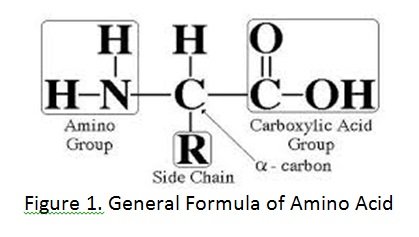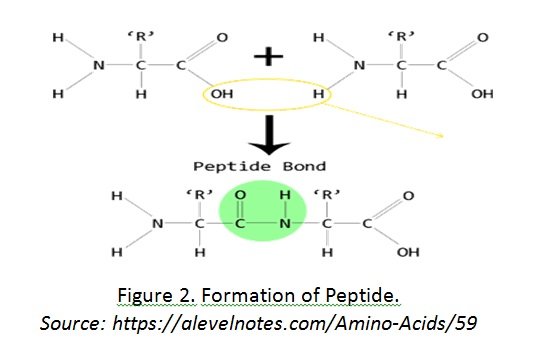[cs_content][cs_section parallax=”false” separator_top_type=”none” separator_top_height=”50px” separator_top_angle_point=”50″ separator_bottom_type=”none” separator_bottom_height=”50px” separator_bottom_angle_point=”50″ style=”margin: 0px;padding: 45px 0px;”][cs_row inner_container=”true” marginless_columns=”false” style=”margin: 0px auto;padding: 0px;”][cs_column fade=”false” fade_animation=”in” fade_animation_offset=”45px” fade_duration=”750″ type=”1/1″ style=”padding: 0px;”][cs_text]Forensic Chemistry > 3. Because proteins are a major structural and metabolic component of all living organisms, the analysis of protein samples can be useful in forensic chemistry > Amino Acids And Proteins >[/cs_text][cs_text style=”color: #800000;font-family: “Oxygen”,sans-serif;”]Describe the composition and general formula for amino acids and explain that proteins are chains of amino acids [/cs_text][cs_text]Amino Acids
- are linked together by peptide bond or amide bond to form polypeptides which eventually become protein when properly folded and completely functional
- generally composed of α-amino group, α-carboxylic group and side chain group wherein the side chain (R) indicates if the amino acid is an alkyl-, sulfur-containing, aromatic, amides, acid or base
[/cs_text][cs_text] [/cs_text][cs_text]
[/cs_text][cs_text] [/cs_text][/cs_column][/cs_row][/cs_section][/cs_content]
[/cs_text][/cs_column][/cs_row][/cs_section][/cs_content]